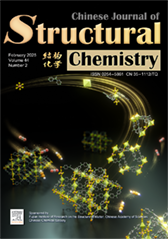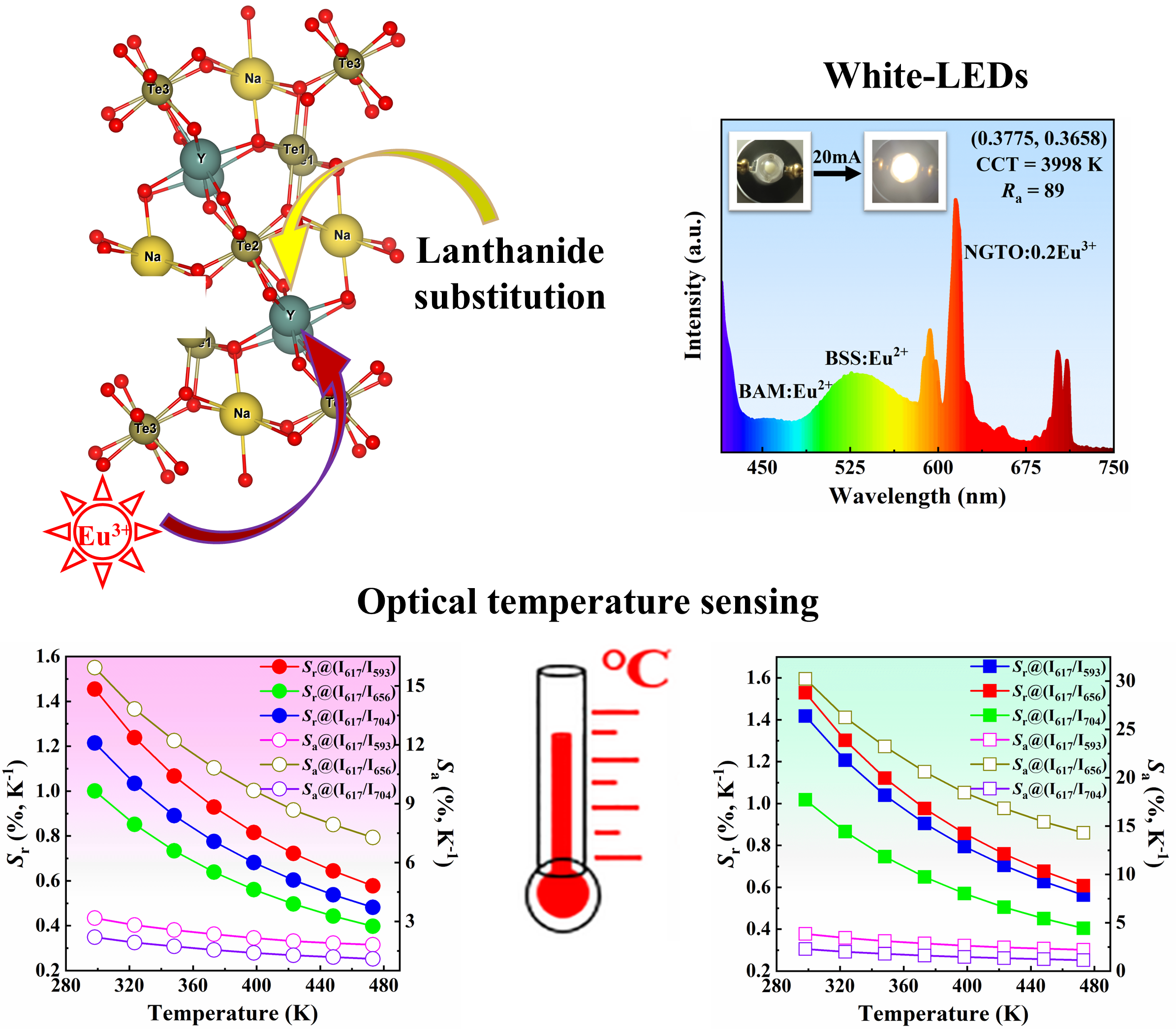
A new SIFSIX anion pillared cage MOF with crs topological structure for efficient C2H2/CO2 separation
Huirong Chen, Yingzhi He, Yan Han, Jianbo Hu, Jiantang Li, Yunjia Jiang, Basem Keshta, Lingyao Wang, Yuanbin Zhang* Submit a Manuscript
Hongzhi Zhang, Hong Li, Asif Ali Haider, Junpeng Li, Zhi Xie*, Hongming Jiang, Conglin Liu, Rui Wang, Jing Zhu*
Chin. J. Struct. Chem., 2025, 44(2), 100509. DOI: 10.1016/j.cjsc.2024.100509
February 1, 2025
Phosphor; Europium; Optical thermometer; Temperature sensing; White-LEDs
ABSTRACT
Bifunctional applications in solid state lighting and optical thermometry are attractive in the optical field. Despite Eu3+ doped phosphors are widely used in white-LEDs, phosphors with high temperature sensitivity remain rare. Herein, NaLnTe2O7:Eu3+ (Ln = Y and Gd) phosphors were synthesized using a rapid microwave-assisted solid-state method to fulfill these applications. Under 395 nm excitation, NaLnTe2O7:Eu3+ exhibit the characteristic 5D0→7FJ (J = 1-4) transitions of Eu3+. Substituting Gd3+ for Y3+ enhances luminescence by approximately 2.42 times. Structural analyses reveal that the improved luminescent properties are attributed to the more distorted and appropriate coordination environment in NaGdTe2O7:Eu3+. Finally, white-LEDs using NaGdTe2O7:Eu3+ as the red-component produce white light with high Ra of 89. Furthermore, the distinct thermal responses of the 5D0→7FJ transitions enable NaLnTe2O7:Eu3+ to function as temperature sensors via fluorescence intensity ratio strategy. NaYTe2O7:Eu3+ possesses the maximum relative/absolute sensitivity of 1.45%/15.93% K-1, whereas NaGdTe2O7:Eu3+ achieves the maximum relative/absolute sensitivity of 1.53%/30.24% K-1. This work highlights the significance of cationic substitution in enhancing luminescent properties for multifunctional applications.






